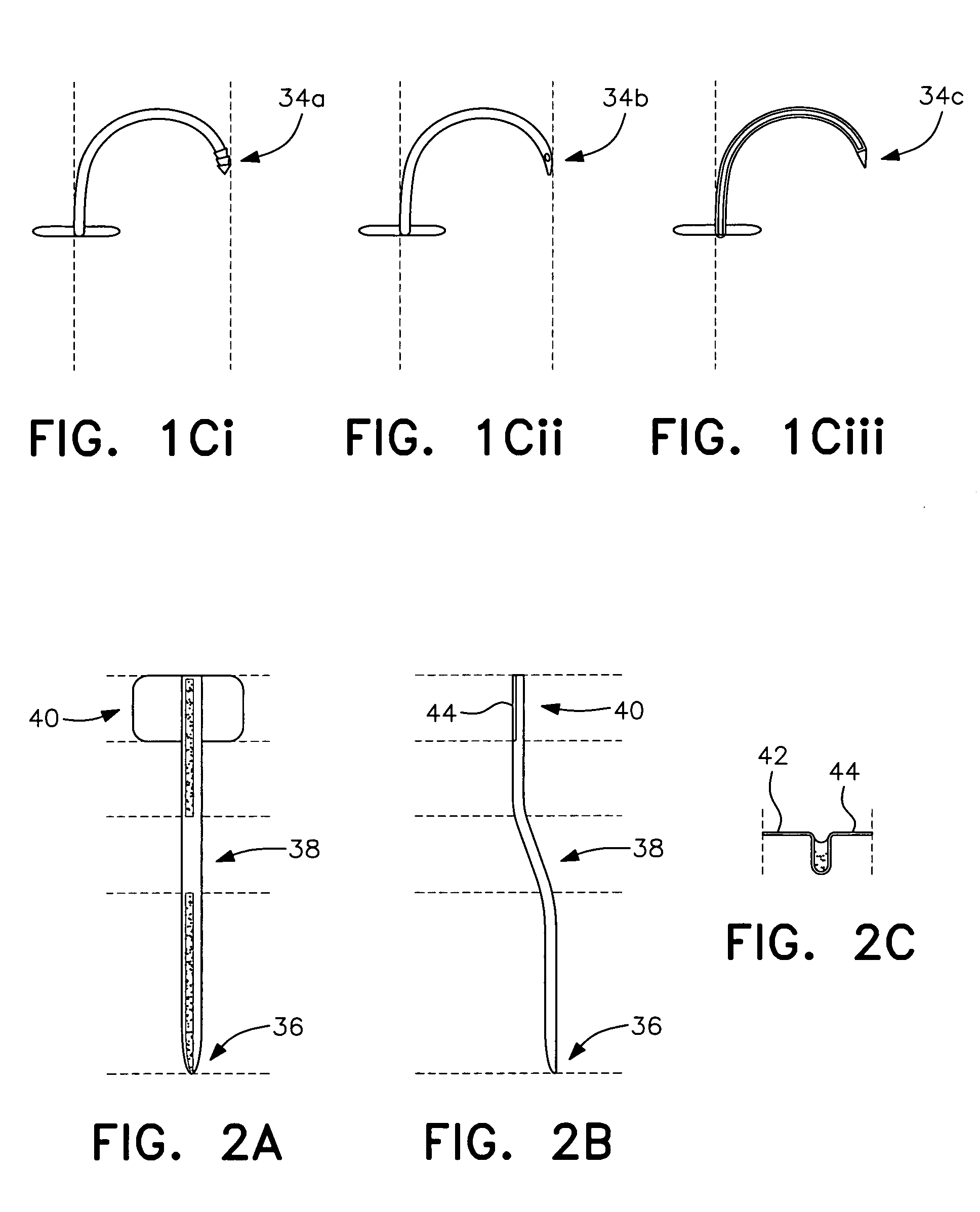Surgical technique and tools for use in treatment of male urinary incontinence
a surgical technique and urinary incontinence technology, applied in the field of urology, can solve the problems that the anatomic differences between male and female do not allow the use of the same instruments
- Summary
- Abstract
- Description
- Claims
- Application Information
AI Technical Summary
Benefits of technology
Problems solved by technology
Method used
Image
Examples
Embodiment Construction
[0052]In describing a preferred embodiment of the invention illustrated in the drawings, specific terminology will be resorted to for the sake of clarity. However, the invention is not intended to be limited to the specific terms so selected, and it is to be understood that each specific term includes all technical equivalents which operate in a similar manner to accomplish a similar purpose.
The Passer
[0053]As shown in FIGS. 1A, 1B and 1C, each helical passer is made of three parts: a handle 22, a vertical segment 24 and a horizontal segment 26 formed in a spiral.
[0054]The handle 22 has a height of 8 to 15 cm. It can be either made of stainless steel or any other material such as plastic.
[0055]The vertical segment 24 measures from 2 to 6 cm; preferably 4 cm, with a diameter of 2.5 to 4.5 mm in section. It can also be made of stainless steel. It can either be connected to the handle unless it is formed integrally as one piece.
[0056]The segment 26 is spirally shaped in a horizontal pl...
PUM
 Login to View More
Login to View More Abstract
Description
Claims
Application Information
 Login to View More
Login to View More - R&D
- Intellectual Property
- Life Sciences
- Materials
- Tech Scout
- Unparalleled Data Quality
- Higher Quality Content
- 60% Fewer Hallucinations
Browse by: Latest US Patents, China's latest patents, Technical Efficacy Thesaurus, Application Domain, Technology Topic, Popular Technical Reports.
© 2025 PatSnap. All rights reserved.Legal|Privacy policy|Modern Slavery Act Transparency Statement|Sitemap|About US| Contact US: help@patsnap.com



